Description
The instruction for medical use of Tizoptan Torgovoye medicine a name Tizoptan Mezhdunarodnoye the unlicensed name Is not present the Dosage form of the Drop eye, 3 ml Structure 1 ml of drug contains active agents: bimatoprost 0.3 mg, Timololum a maleate of 6.83 mg (it is equivalent to Timololum of 5 mg), excipients: a benzalkoniya chloride, citric acid monohydrate, hydrophosphate dinatrium heptahydrate, sodium chloride, sodium hydroxide to rn 7.3, acid chlorohydrogen to rn 7.3, water for injections up to 1 ml. The description Transparent solution from colourless till light yellow color Pharmacotherapeutic group Protivoglaukomny drugs and miotik. Beta adrenoblockers. Timololum in a combination with other drugs. The ATX S01ED51 code the Pharmacological Pharmacokinetics Tizoptan properties System absorption of drug is minimum, does not differ both at the combined treatment, and at instillation of each of drug components separately. In two researches lasting 12 months the system cumulation of any of active ingredients is noted. Bimatoprost In the researches in vitro it is shown what bimatoprost gets into an iris of the eye of an eye and a sclera. At instillation of 0.03% of solution of the bimatoprost on 1 drop in both eyes once a day within 2 weeks the maximum concentration (Cmax) of the bimatoprost in blood plasma is reached within 10 minutes after use, and within 1.5 hours its concentration in blood plasma decreases to the lower limit of definition (0.025 ng/ml). Average Cmax values and the areas under a curve concentration time (AUC0-24 of the h) of the bimatoprost were close for 7 and 14 day of use, and were 0.08 ng/ml and 0.09 ng*ch/ml respectively, indicating that equilibrium concentration of the bimatoprost is reached within the first week of use. Bimatoprost it is moderately distributed in fabrics, and the system volume of distribution at achievement of equilibrium concentration of drug is 0.67 l/kg. Bimatoprost is mainly in blood plasma. Communication of the bimatoprost with proteins of blood plasma makes about 88%. Bimatoprost is exposed to oxidation, N-deetilirovaniyu and a glyukuronirovaniye with formation of various metabolites. Bimatoprost it is removed mainly by kidneys. About 67% of the drug administered to intravenously healthy volunteers were removed with urine, and 25% – through the digestive tract (DT). Elimination half-life (T1/2) of the bimatoprost. Defined after its intravenous administration, made about 45 minutes, and the general clearance – 1.5 l/h/kg. At elderly patients: At use of the bimatoprost the average value (AUC0-24 of the h) at elderly patients is 2 times a day 0.0634 ng*ch/ml that significantly exceeds value of this indicator at healthy young faces – 0.0218 ng*ch, ml. Nevertheless, this difference has no clinical importance as system exposure of the bimatoprost at its topical administration at older ill and healthy young faces remains very low. Cumulation of the bimatoprost in system circulation is not observed, the profile of safety does not differ at elderly patients and persons of young age. Timololum At patients to whom surgical treatment of a cataract was carried out after instillation of eye drops in the form of 0.5% of solution, Timololum Cmax in intraocular liquid in 1 h made 898 ng/ml. A number of drug gets to a system blood stream and is exposed to metabolism in a liver. T1/2 of Timololum makes about 4-6 h. A part of Timololum which underwent metabolism in a liver is removed through digestive tract, and other its part and metabolites are removed by kidneys. Timololum in insignificant degree contacts proteins of blood plasma. Tizoptan’s pharmacodynamics – the combined medicine, being its part bimatoprost and Timololum reduce the intraocular pressure (VGD) due to the combined interaction, resulting in considerably more significant hypotensive effect in comparison with effect of each of components separately. Bimatoprost treats synthetic prostamida, in chemical structure it is similar to F2α (PGF2α) prostaglandin. Bimatoprost does not influence one of the known types of receptors of prostaglandin. Hypotensive action of the bimatoprost is carried out due to strengthening of outflow of intraocular liquid through trabeculas and on a uveoskleralny outflow tract of intraocular liquid of an eye. Timololum – non-selective beta blocker, has no internal sympathomimetic and membrane stabilizing activity. Timololum reduces VGD due to reduction of formation of intraocular liquid. The exact mechanism of action is not installed, perhaps, it is connected with oppression of synthesis of cyclic adenosinemonophosphate (ts-AMF) and is caused by endogenous stimulation of beta and adrenergic receptors. Indications – decrease in the intraocular pressure (VGD) at patients with an open angle glaucoma and intraocular hypertensia at insufficient efficiency of topical administration of drugs of group of beta blockers and analogs of prostaglandin. The route of administration and doses the Recommended doses at adults (including patients of advanced age) One drop is dug in in a conjunctival sac of the affected eye of 1 times a day in the morning. Drug use daily at the same time is recommended. If administration of drug is missed once, the drug is administered next day. It is not recommended to exceed a dose more than 1 time a day. Doses at patients of special groups Patients with a renal and liver failure Tizoptan was not studied at patients with a renal or liver failure. Therefore it is necessary to be careful in treatment of such patients. Use in pediatrics Safety and Tizoptan’s efficiency at children aged from 0 up to 18 years is not established, in this regard use of drug for this group of patients is not recommended. The route of administration After burying is recommended lacrimonasal occlusion or cover a century within 2 minutes. It promotes reduction of system side effects and increase in local activity. When using several ophthalmologic drugs of topical administration, it is necessary to observe an interval between burying at least 5 minutes. Side effects the Frequency of the side effects revealed during the researches was estimated as follows: very often (& gt, 1/10), it is frequent (& gt, 1/100, & lt, 1/10), infrequently (& gt, 1/1000, & lt, 1/100). In clinical trials of the drug Tizoptan the following side effects are revealed: From the central nervous system: often – a headache, dizziness. From an organ of sight: very often – conjunctiva hyperaemia, growth of eyelashes, it is frequent – a superficial keratitis, a cornea erosion, burning sensation, an itching, a thermalgia in eyes, feeling of a foreign body, dryness of a mucous membrane of eyes, reddening a century, eye pain, photophobia, discharges from eyes, a disorder of vision, an itching of an eyelid skin, decrease in visual acuity, blepharitis, the century, irritation of a mucous membrane of eyes, an epiphora, infrequently – an iridocyclitis, a chemosis, morbidity a century, an asthenopia, a trichiasis, an iris hyperpegmentation, deepening of a fold of a century, retraction of a century swelled, frequency is unknown – kistoidny macular hypostasis. From a respiratory system: often – rhinitis, infrequently – dispnoe, frequency is unknown – a bronchospasm (mainly at patients with the existing bronkhospastichesky disease). From skin and hypodermic fatty tissue: often – xanthopathy a century, a hirsutism, a periokulyarny hyperpegmentation of skin. Other side effects which were observed at use of one of components of drug and potentially possible during the Tizoptan drug treatment: Bimatoprost Infectious and parasitic diseases: infectious disease (catarrhal phenomena and symptoms of damage of upper airways). From an organ of sight: allergic conjunctivitis, cataract, darkening of eyelashes, nictitating spasm, eye retinal apoplexy, uveitis, periorbital ertiyema, misting of sight. From a cardiovascular system: increase in arterial blood pressure. General disturbances and changes in the injection site: asthenia, peripheral hypostases. From digestive tract: nausea. Laboratory indicators: changes of activity of enzymes of a liver. Timololum from the immune system: system allergic reactions, including a Quincke’s edema, urticaria, focal and multiple rashes, an itching, an anaphylaxis. From a metabolism and food: hypoglycemia. Mental disturbances: insomnia, depression, dreadful dreams, memory loss. From the central nervous system: to a syncope, acute disorder of cerebral circulation, strengthening of symptoms of a myasthenia gravis, paresthesia, brain ischemia. From an organ of sight: decrease in sensitivity of a cornea, a diplopia, a ptosis, amotio of a choroid (after operational treatment of glaucoma), a keratitis, misting of sight. From an organ of hearing and a vestibular mechanism: sonitus. From a cardiovascular system: atrioventricular block, cardiac arrest, disturbances of a heart rhythm, loss of consciousness, bradycardia, heart failure. Stagnant heart failure, lowering of arterial pressure, thorax pain. Disturbance of cerebral circulation, the alternating lameness, Reynaud’s syndrome, a cold snap of extremities, heartbeat, hypostases. From a respiratory system: a bronchospasm (generally at persons with bronchospasm episodes in the anamnesis), short wind, cough. From digestive tract: food faddism, nausea, diarrhea, dyspepsia, dryness of a mucous membrane of an oral cavity. Abdominal pain, vomiting. From skin and hypodermic fatty tissue: alopecia, psoriazopodobny rashes, exacerbation of psoriasis, skin rash. From the musculoskeletal system and connective tissue: system lupus erythematosus, muscle pain. From an urinary system: Peyroni’s disease. From a reproductive system and a mammary gland: sexual dysfunction, decrease in a libido. Others: asthenia/fatigue. Contraindications – hypersensitivity to drug components – a syndrome of hyperreactivity of airways, including bronchial asthma in stages of aggravation and the postponed episodes in the anamnesis, the heavy chronic obstructive pulmonary disease (COPD) – sinus bradycardia, a sick sinus syndrome, sinoauricular block, atrioventricular block of II and III degree without the implanted artificial pacemaker of heart, clinically apparent heart failure, cardiogenic shock – children’s and teenage age up to 18 years. Medicinal interactions of Special researches on studying medicinal interaction of the fixed combination bimatoprost / Timololum it was not carried out. Potentiation of effects of combined use of ophthalmologic solutions of beta-blockers and the blockers of slow calcium channels accepted inside, a guanetidina, beta blockers, parasympathomimetics, antiarrhytmic drugs (including Amiodaronum) and cardiac glycosides is possible that was shown by a lowering of arterial pressure and/or the profound bradycardia. It was reported about a potentsiirovaniye of system effects of beta-blockers (for example, decrease in ChSS, a depression) at combined use of Timololum with CYP2D6 inhibitors (quinidine, fluoxetine, paroksetiny). It was periodically reported about mydriasis cases at simultaneous use of ophthalmologic beta-blockers and adrenaline (epinephrine). The patients applying Tizoptan with other analogs of prostaglandins have to be under observation for control of change of intraocular pressure. It was very seldom reported about cases of calcification of a cornea at combined use about phosphate – the containing eye means. Special instructions As well as other ophthalmologic medicines, Tizoptan can get into a system blood stream. Because of presence of Timololum, a beta and adrenergic component, various types of undesirable reactions (can be observed from a cardiovascular and respiratory system), as at use of system beta-blockers. Frequency of emergence of undesirable reactions at local prescribing of drug is lower, than at system use. A cardiovascular system Beta blockers can cause aggravation of symptoms in patients with cardiovascular diseases (for example, with coronary heart disease, Printsmetal’s stenocardia and heart failure), and hypotonia. Therefore in some cases it is necessary to consider therapy options with other active agents. Patients with heavy peripheral circulatory disturbances (for example, severe forms of a Raynaud’s disease or Reynaud’s syndrome) should use drug with care. A respiratory system At use of Timololum there were messages about side effects from respiratory organs, including deaths owing to a bronchospasm for patients with bronchial asthma and also is more rare – from heart failure. Drug should be used with care at patients with the easy / moderate chronic obstructive pulmonary disease (COPD) and only when the potential advantage exceeds potential risk. Hypoglycemia / diabetes Beta blockers can mask signs and symptoms of a sharp hypoglycemia, in this regard it is necessary to apply with care at the patients subject to a spontaneous hypoglycemia or at patients with diabetes. Also beta blockers can mask symptoms of a hyperthyroidism also. Other beta blockers Timololum can affect intraocular pressure or strengthen action of system beta-blockers at the patients who are already receiving system beta blocker. Careful observation of such patients is recommended. Also use of two local beta blockers is not recommended. Anaphylactic reactions At use of beta blockers for patients with atopic manifestations in the anamnesis and heavy anaphylactic reactions to various allergens of a dose of epinephrine (adrenaline) which are usually used for stopping of anaphylactic reactions can be inefficient. Amotio of a horioidea It was reported about cases of amotio of a horioidea at use of the means reducing production of intraocular liquid (for example, Timololum, acetazoleamide) after filtrational surgery. Surgical anesthesia Ophthalmologic drugs with the β-blocking action can suppress system effects of β-agonists, for example, of adrenaline. It is necessary to warn the anesthesiologist about use by the patient of Timololum. A liver At patients with a disease of a liver of an easy course or initially superactivity of enzymes of a liver – alaninaminotranspherases (ALT), aspartate aminotransferases (nuclear heating plant) and/or the general bilirubin, bimatoprost did not influence function of a liver during the period of study lasting more than 24 months. Data on undesirable reactions owing to influence of Timololum on function of a liver are absent. It is necessary to inform an organ of sight Prior to treatment of patients on the possible growth of eyelashes, xanthopathy strengthening a century and pigmentation of an iris of the eye of eyes as these side effects are established during the researches of the bimatoprost and the drug Tizoptan. Some changes can be constants, and can be followed by emergence of differences between eyes if instillations of drug carried out only to one eye. After drug withdrawal Tizoptan pigmentation of an iris of the eye can remain a constant. In 12 months of the Tizoptan drug treatment the frequency of pigmentation of an iris of the eye is noted at 0.2% of patients. And in 12 months of treatment only bimatoprosty in the form of eye drops of 1.5%, further increase in frequency of this effect it was not observed during therapy lasting 3 years. Strengthening of pigmentation of an iris of the eye of an eye is caused by strengthening of products of melanocytes, but not just increase in their quantity. Duration of development of enhancement effect of pigmentation of an iris of the eye is unknown. Discoloration iridescent eyes, observed at use of the bimatoprost, can be not expressed during the period from several months to several years. Use of drug does not influence a nevus or deposits of a pigment on an eye iris of the eye. It was reported that pigmentation of periorbital area at some patients has reversible character. Change of a refraction is possible (owing to therapy cancellation by miotocs in some cases). Tizoptan it is necessary ispolzo
to at with care at patients with an aphakia, at patients an artifakiya with zadnekapsulyarny gaps, or at patients with the known risk factors for macular hypostasis (for example, with intraocular surgical intervention, occlusion of veins of a retina, an inflammatory disease of eyes and a diabetic retinopathy) as can cause makula hypostasis. Tizoptan it is necessary to use with care at patients with active intraocular inflammation (for example, a uveitis) as inflammation can be aggravated. Patients with diseases have corneas as can induce a syndrome of a dry eye Skin growth of hair on those sites of skin to which drug was applied accidentally Is possible. It is important to apply Tizoptan strictly according to the instruction for medical use and not to allow hit of the drug Tizoptan on skin. Excipients Excipient the benzalkoniya the chloride which is a part of the drug Tizoptan can cause irritation of a mucous membrane of eyes and discoloration of soft contact lenses. Contact lenses need to be removed before administration of drug, it is possible to dress them in 15 minutes after instillation. Benzalkoniya chloride can cause an acute keratitis and/or a toxic helcoma. In this regard observation of a condition of the patient at the frequent or long Tizoptan drug treatment at persons with a syndrome of a dry eye is necessary and at changes of a cornea. After opening of a bottle it is impossible to exclude a possibility of microbic contamination of its contents that can lead to inflammatory damages of eyes. The drug expiration date after the first opening of a bottle makes 28 days. After the expiration of the specified time the bottle should be thrown out even if solution is completely not used. It is recommended to write down date of opening of a bottle on a cardboard pack of medicine. Other conditions Tizoptan was not studied at patients with inflammatory diseases of eyes, neovascular, post-inflammatory, closed-angle, narrow and congenital angle glaucoma. In researches on efficiency and safety of the bimatoprost at patients with glaucoma or eye hypertensia, it was shown that more frequent burying, than can daily reduce effect of decrease in VGD by 1 dose of the bimatoprost. Patients, the using Tizoptan with other analogs of prostaglandin have to make regular control of change of VGD. Pregnancy and a lactation Adequate data on use of the fixed combination bimatoprost / Timololum at pregnant women are absent. Tizoptan at pregnancy it is necessary to apply only when the expected advantage for mother exceeds potential risk for a fruit. Adequate and strictly controlled researches of the drug Tizoptan at pregnant women were not conducted. in researches on animals data on reproductive toxicity at high doses of the bimatoprost are obtained. Epidemiological researches did not reveal congenital malformations of a fruit, but established risk of a delay of pre-natal fetation at intake of drugs of group of beta blockers. When patients accepted beta blocker until delivery, at newborns clinical symptoms, characteristic of this group of drugs were noted (for example, bradycardia, hypotension, a respiratory distress syndrome and a hypoglycemia). In case of use of the drug Tizoptan up to childbirth, observation of a condition of the newborn during the first days of life is necessary. In researches on animals the reproductive toxicity of Timololum when using the doses considerably exceeding is shown than the doses appointed in clinical practice. Tizoptan is not recommended to apply during pregnancy, except for cases of special need. Beta-blockers get into breast milk. However, at use of Timololum in the form of eye drops in therapeutic doses the development of clinical symptoms in children, in view of lack of enough drug in breast milk is improbable. It is unknown whether gets bimatoprost into breast milk at the person, but it is established that it contains in milk of the lactating rats. Tizoptan it is not necessary to apply at women during breastfeeding. Influence on ability to driving and other mechanisms Perhaps passing deterioration in sight after administration of drug therefore the patient has to wait before complete recovery of sight before starting driving of the car or control of mechanisms. Overdose Symptoms: About cases of overdose of the drug Tizoptan it was not reported, at introduction in the form of eye drops the overdose is improbable. Bimatoprost At inadvertent administration of drug Tizoptan can be inside useful the following information: symptoms of toxic influence of the bimatoprost in doses to 100 mkg/kg/days are noted during 2 weeks oral introduction in an experiment on rats and mice. The dose applied in a research expressed in mg/sq.m exceeds by 70 times a possible dose of the bimatoprost at accidental intake of contents of a bottle of the drug Tizoptan by the child with the body weight of 10 kg. Timololum At overdose of Timololum the following symptoms can be observed: bradycardia, lowering of arterial pressure, bronchospasm, headache, dizziness, short wind, cardiac arrest. In researches it is shown that Timololum completely is not removed at a hemodialysis. Treatment: If the overdose happens, performing symptomatic therapy is necessary. Form of release and packing of the Drop eye. On 3 ml in a polyethylene bottle with a cover dropper and the screwing-up cap of blue color with control of the first opening. On 1 bottle together with the instruction for medical use in the state and Russian languages place in a pack cardboard. To Store storage conditions at a temperature not above 25 °C. To store out of children’s reach! A period of storage 2 years the use Period after opening of a bottle of 28 days. Not to use after the expiry date specified on packing! Prescription status According to the prescription of Producer/Upakovshchik SENTISS FARM Pvt. Ltd., 212/D-1, Greene Park, New Delhi, India At the plant: Villidzh Khera Nikhla, Tekhsil Nalagarkh, Region of Solan, Himachal Pradesh 174,101, India Holder of the registration certificate of SENTISS FARMA of Pvt. Ltd., India the Address of the organization accepting claims from consumers on quality of medicine in the territory of the Republic of Kazakhstan: Republic of Kazakhstan, 050000, Almaty, Bogenbay St. of the Batyr 132, office 309. Ph./fax: +7 (7272) 96-45-99, Email: sentiss_kz@land.ru the Address of the organization responsible for post-registration observations of safety of medicine in the territory of the Republic of Kazakhstan: Republic of Kazakhstan, 050000, Almaty, Bogenbay St. of the Batyr 132
to Develop





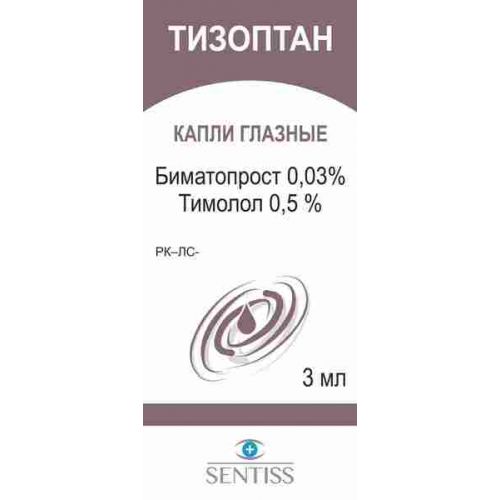
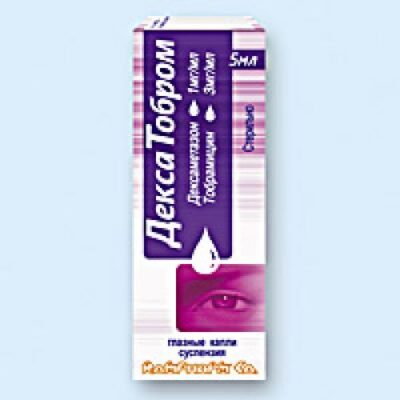
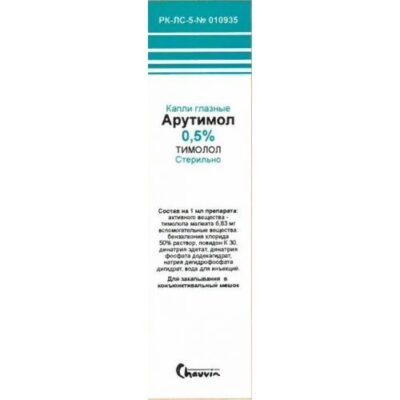
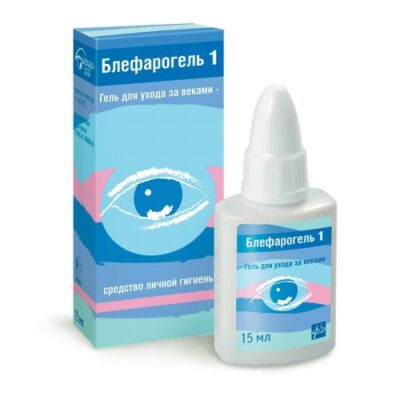
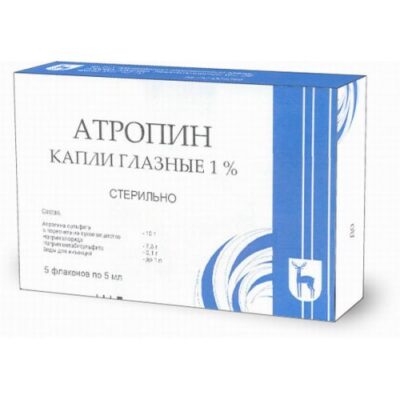
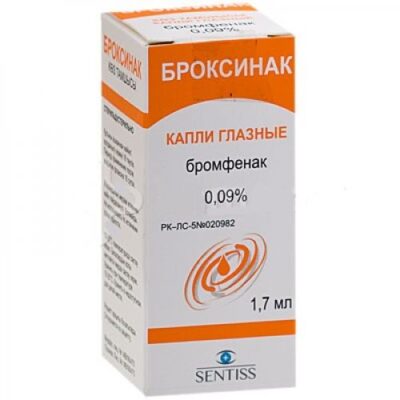
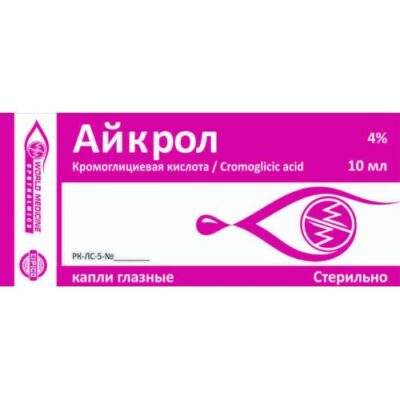
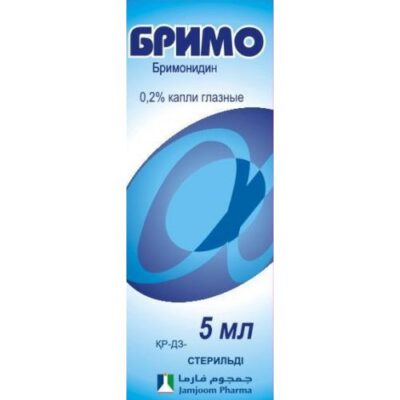
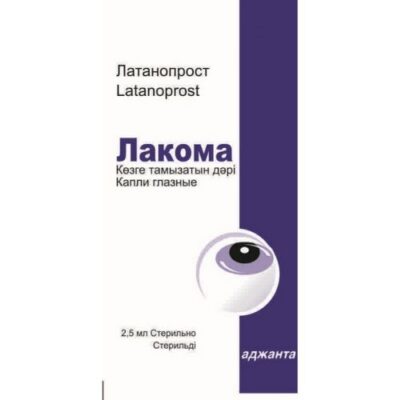

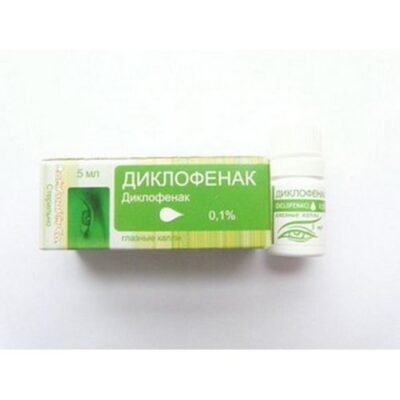






Reviews
There are no reviews yet.